VoIP switching: A guide to upgrading your business communications

Senior Product Marketing Manager, UCaaS
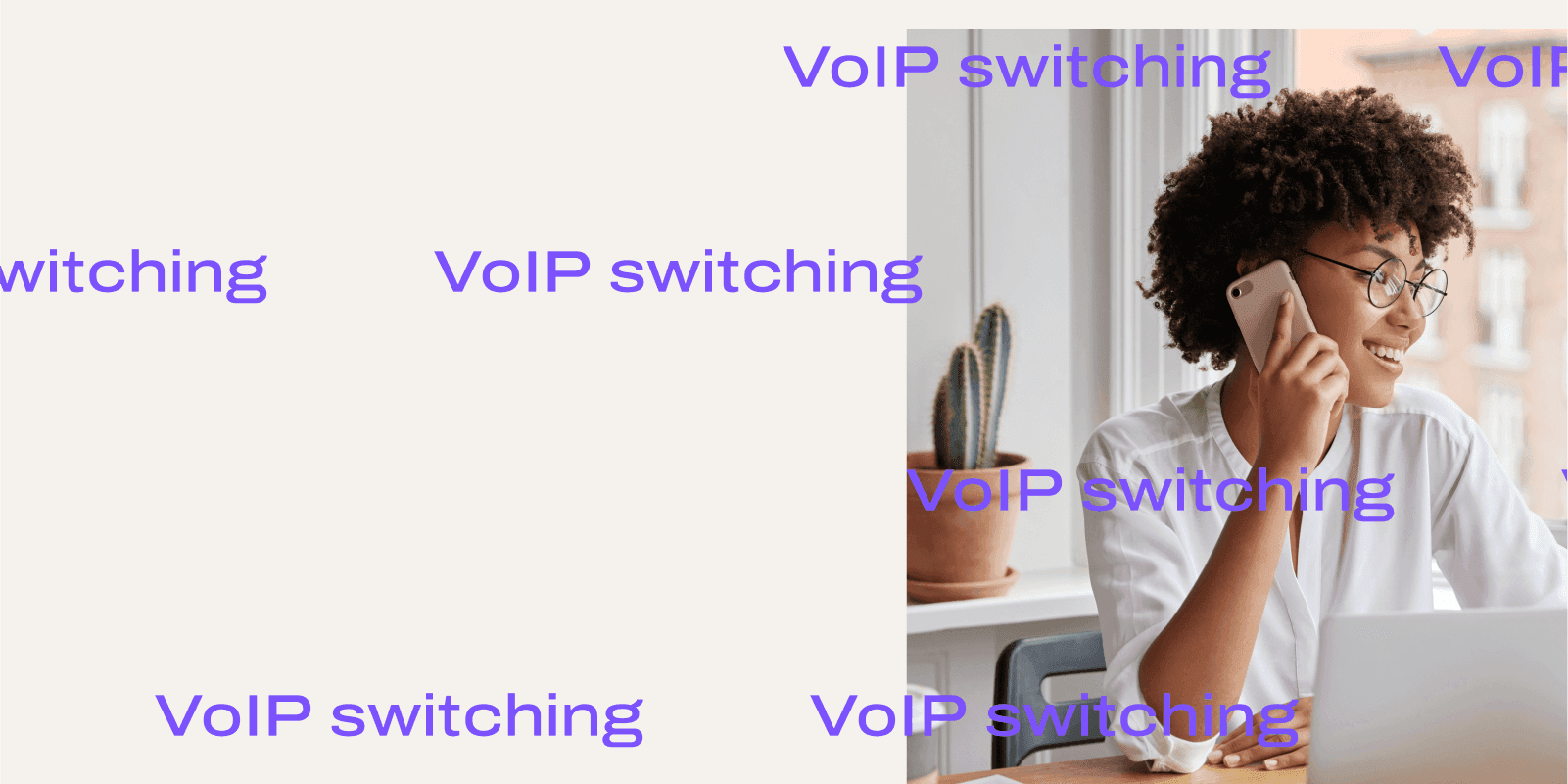
Share
If you’re still using traditional landlines to run your business, you’re missing out on the flexibility, and cost savings offered by enterprise VoIP phone systems.
From letting you and your staff work from anywhere with an Internet connection, to a much smaller bill to pay each month, there’s a big reason why more and more businesses are switching from landlines and desk phones to VoIP.
If that sounds like something your business could use, keep reading to learn more about how VoIP works, the questions to ask yourself to figure out if it’s right for your business, and how to make the switch in a few easy steps.
What is VoIP, exactly?
VoIP stands for Voice over Internet Protocol (sometimes also called Voice over IP), which is the technology that lets you make and receive phone calls and send SMS/MMS texts over the Internet. In traditional telephony, calls are transmitted using copper wires belonging to your phone company—VoIP uses a broadband Internet connection instead.
This means that with an ethernet cable or a Wi-Fi connection, you can make phone calls right from your computer or cell phone—no telephone networks needed.
📚 A deeper dive into the alphabet soup:
Learn more about VoIP, PBX, PSTN, SIP, and more.
Beyond this main difference, VoIP calls are just like regular phone calls. You can dial or click a VoIP phone number on a screen, and it’ll ring the other person’s phone—they won’t know the difference.
Thinking of moving to VoIP? Here are 7 questions to ask
1. Do you and/or your team want to work remotely?
More and more businesses are transitioning to remote working—it offers a better work-life balance, and can help you recruit and retain staff. With a VoIP phone system, you can easily provision new phone numbers in minutes, from anywhere. For example, with Dialpad, you can manage your phone numbers right from the online dashboard:
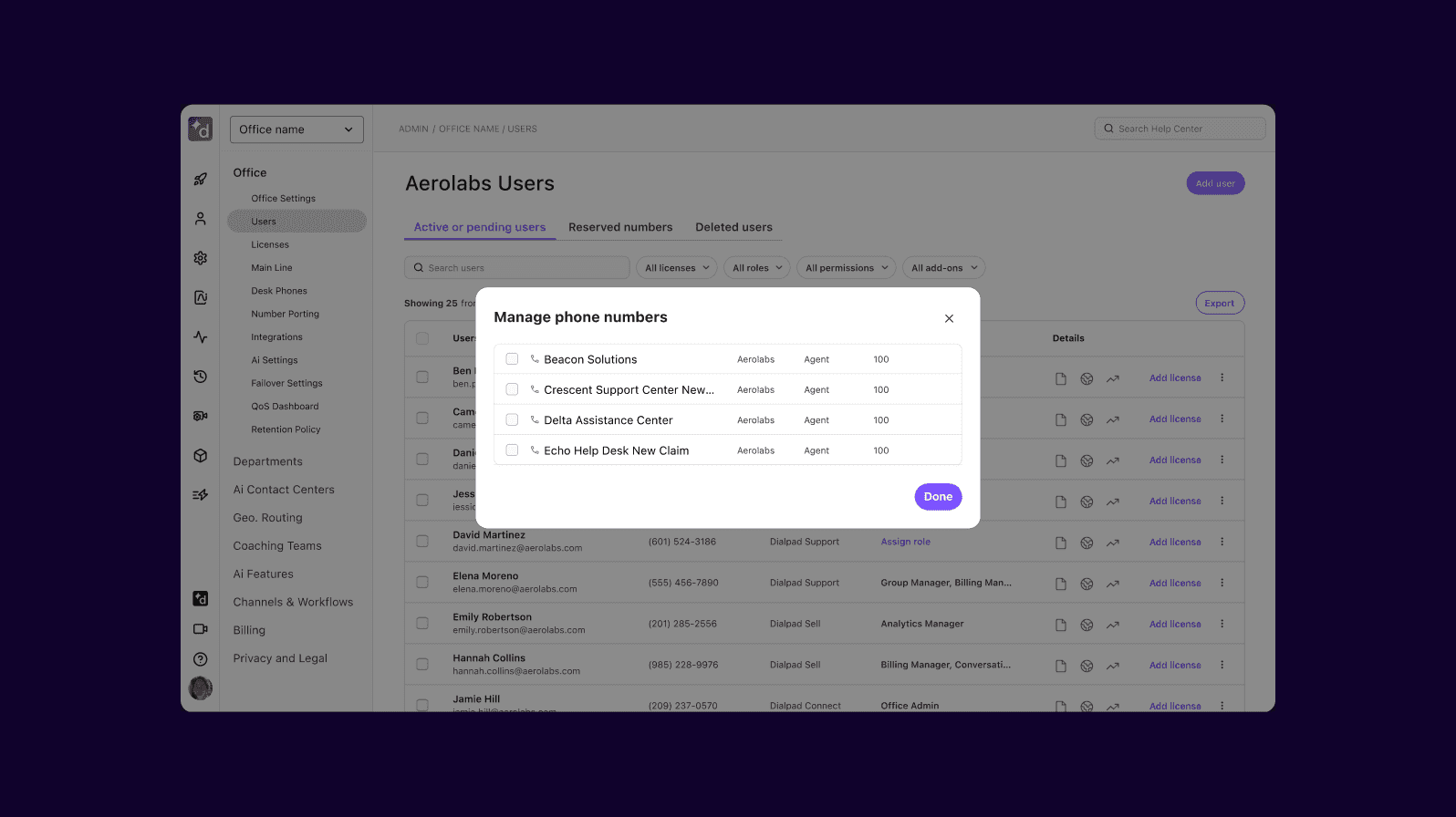
Not only that, you can make phone calls, do video conferencing, and send instant messages + SMS/MMS messages from the desktop or mobile app:
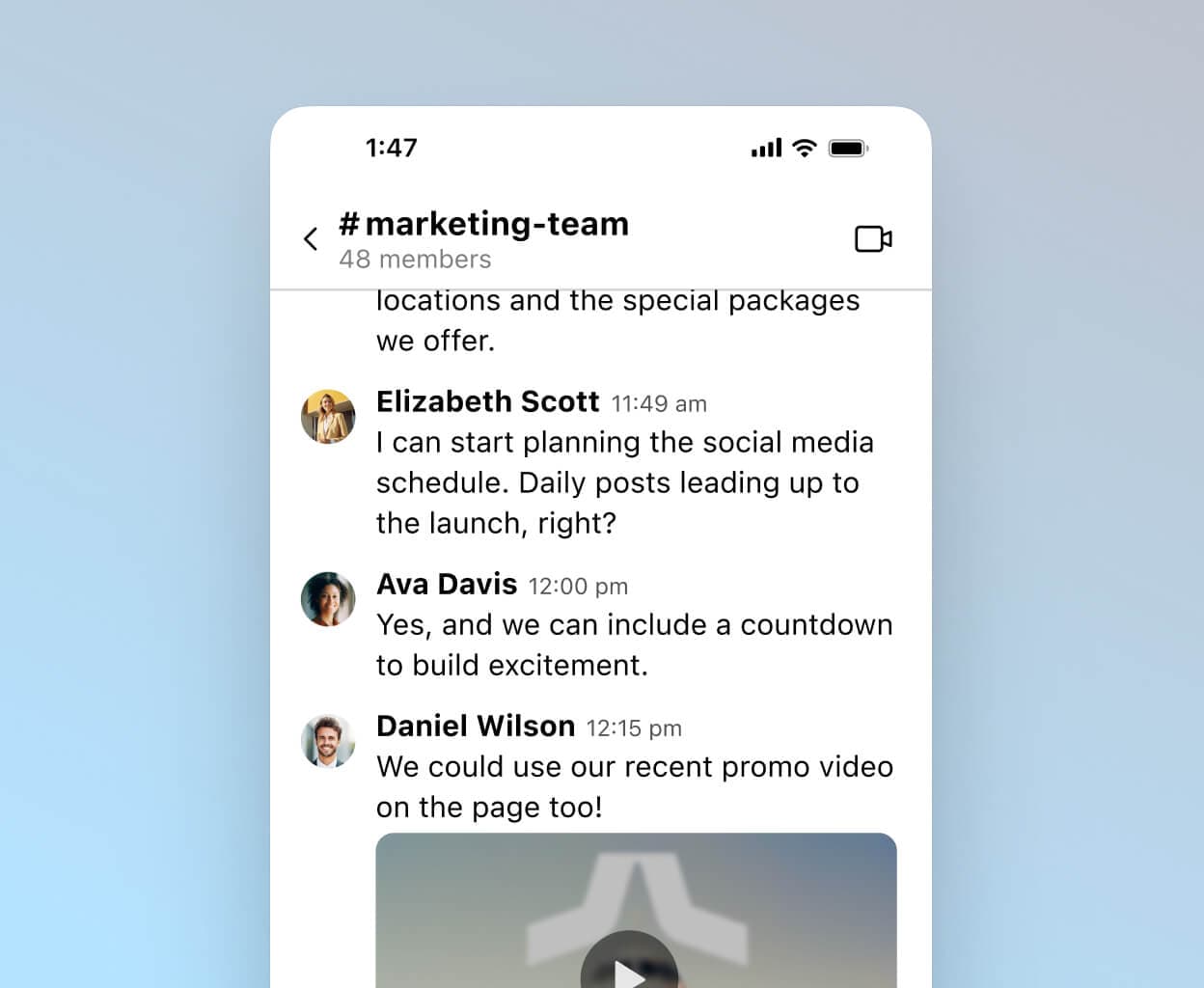
👉 Fun fact:
Dialpad is more than just a cloud phone system—it can do everything a phone system can do, but it’s really a UCaaS (Unified Communications as a Service) platform that uses VoIP technology and that also lets you communicate through different channels including video conferencing and messaging.
2. Do you have very seasonal busy periods or plan to hire more people in different regions?
Another benefit of VoIP systems is that they’re highly scalable, which means you can add (and remove) users much more easily.
In the past, hiring new employees meant setting up new numbers and running physical phone lines. That takes a lot of time and effort—not to mention money.
With VoIP, you can instantly generate a virtual phone number and assign it to someone, and your employees can even use their own computers or cell phones. No need to set up a physical office or ship hardware out. Many VoIP phone systems and UCaaS providers have their own softphone apps that you can just download and start making VoIP calls with.
And with a provider like Dialpad, you can even send faxes virtually—no clunky fax machine needed:
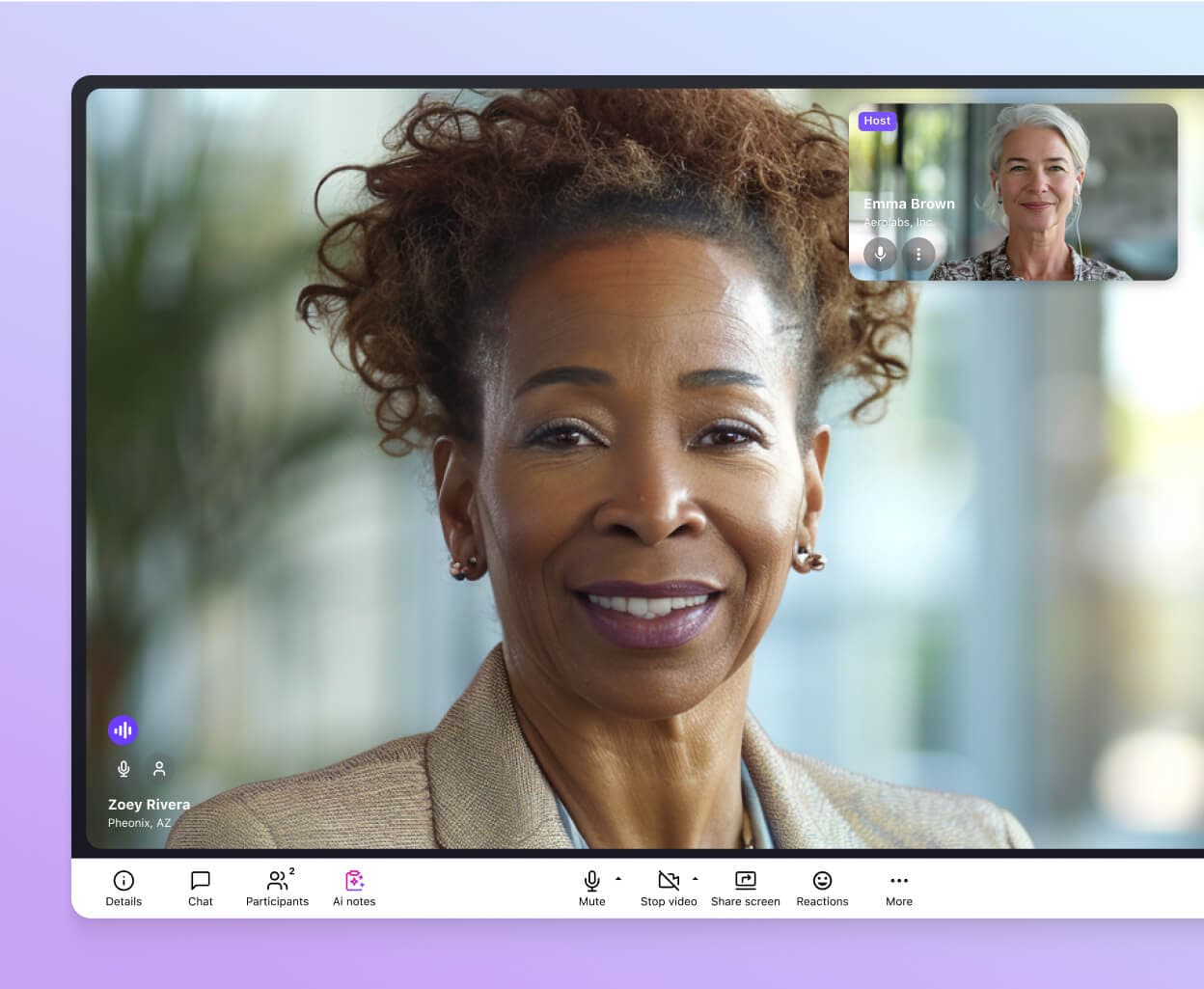
3. Are you carrying around two phones right now?
With a VoIP or UCaaS solution, you don’t have to do that, because you can make business calls from your personal cell phone, while shielding your phone number.
For example, when you make a voice call or send a text from the Dialpad app, you can choose which caller ID you want to show the person who’s receiving your call. This way, you can make sure you're calling a prospect with a local number (even if your personal phone number isn't local)—which boosts your chances of getting a pick-up because people are more likely to pick up calls from a recognizable area code:
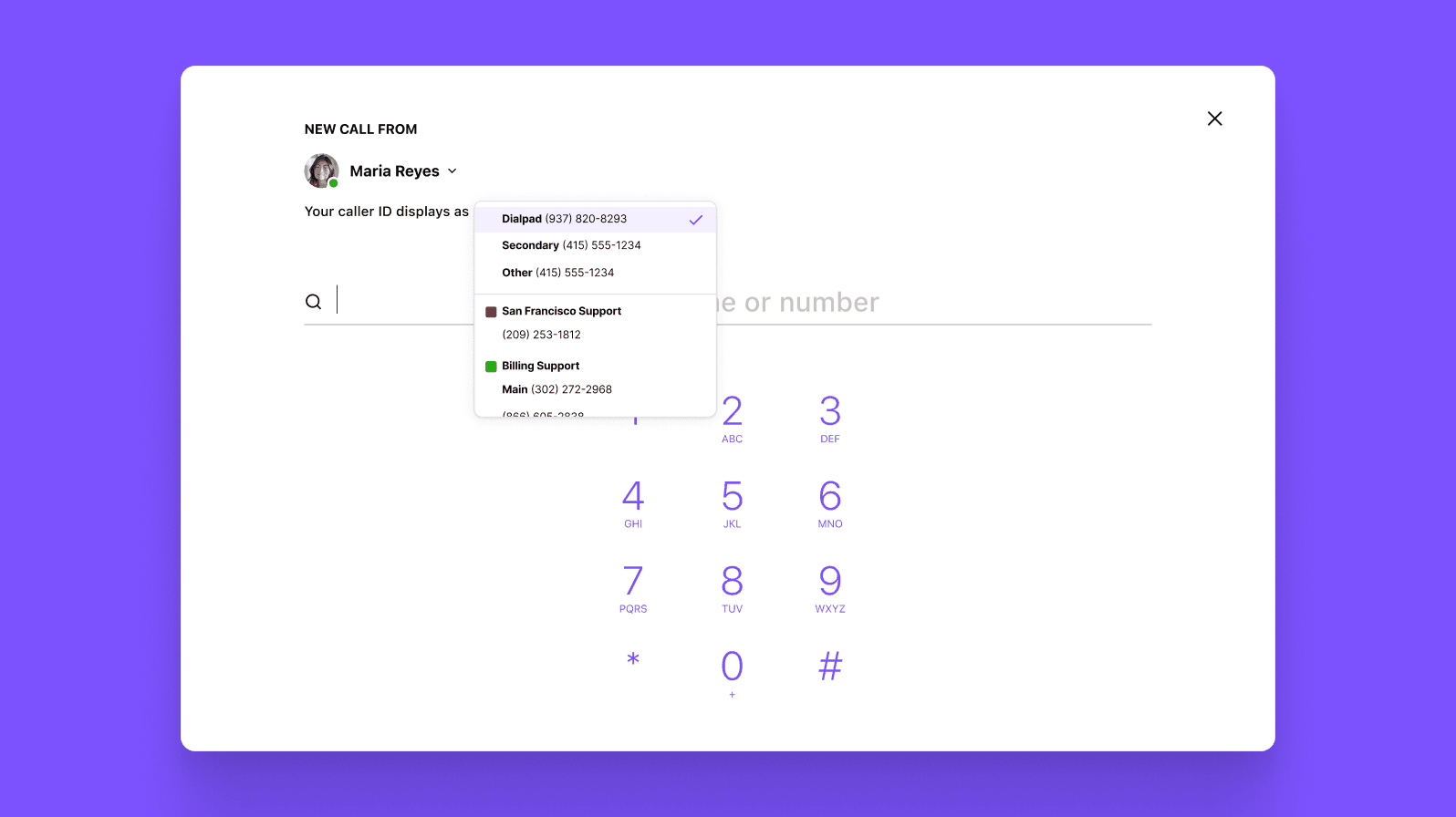
👉Dialpad tip:
With a VoIP solution, you can more easily redirect phone calls to different locations, which means someone in a branch office can pick up calls made to HQ.
4. Is it hard to make changes to your call routing right now?
For any business that gets inbound calls on a daily basis, being able to set up and make changes to your call routing menu is essential.
And traditionally, landline phone systems don’t always make that easy to do. But with some VoIP systems and UCaaS providers, like Dialpad, you can change your routing with just a few clicks from your online account:
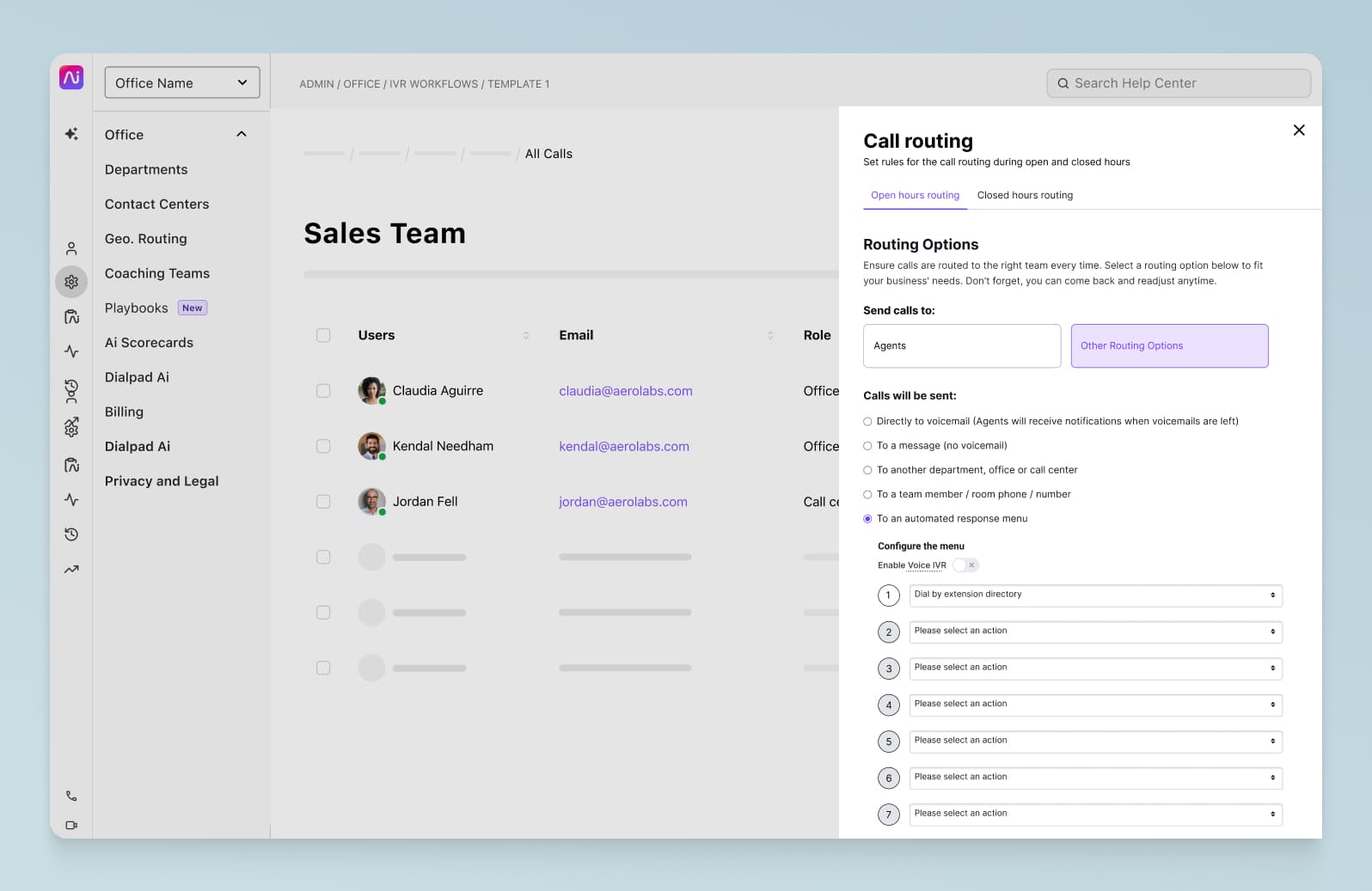
The best part is, your changes are saved and implemented in real time, no waiting around or having to reach out to a customer support team.
5. Do you have a business continuity plan?
Snowstorm, tornado, zombie apocalypse—you never know what’s coming, but you can make sure you have a good business continuity plan and a phone system that is ready to cope with disaster. If a traditional landline system goes down, your customers can’t get through. But with VoIP, you can set up failover protocols so that calls are instantly routed to available numbers or other communications channels.
6. Can you easily see analytics about when phone calls are coming in?
This isn’t something that necessarily comes with all VoIP phone systems, but some do come with built-in analytics that show you useful data like call volume patterns, missed and abandoned calls, and so on. Here’s how it looks in Dialpad:
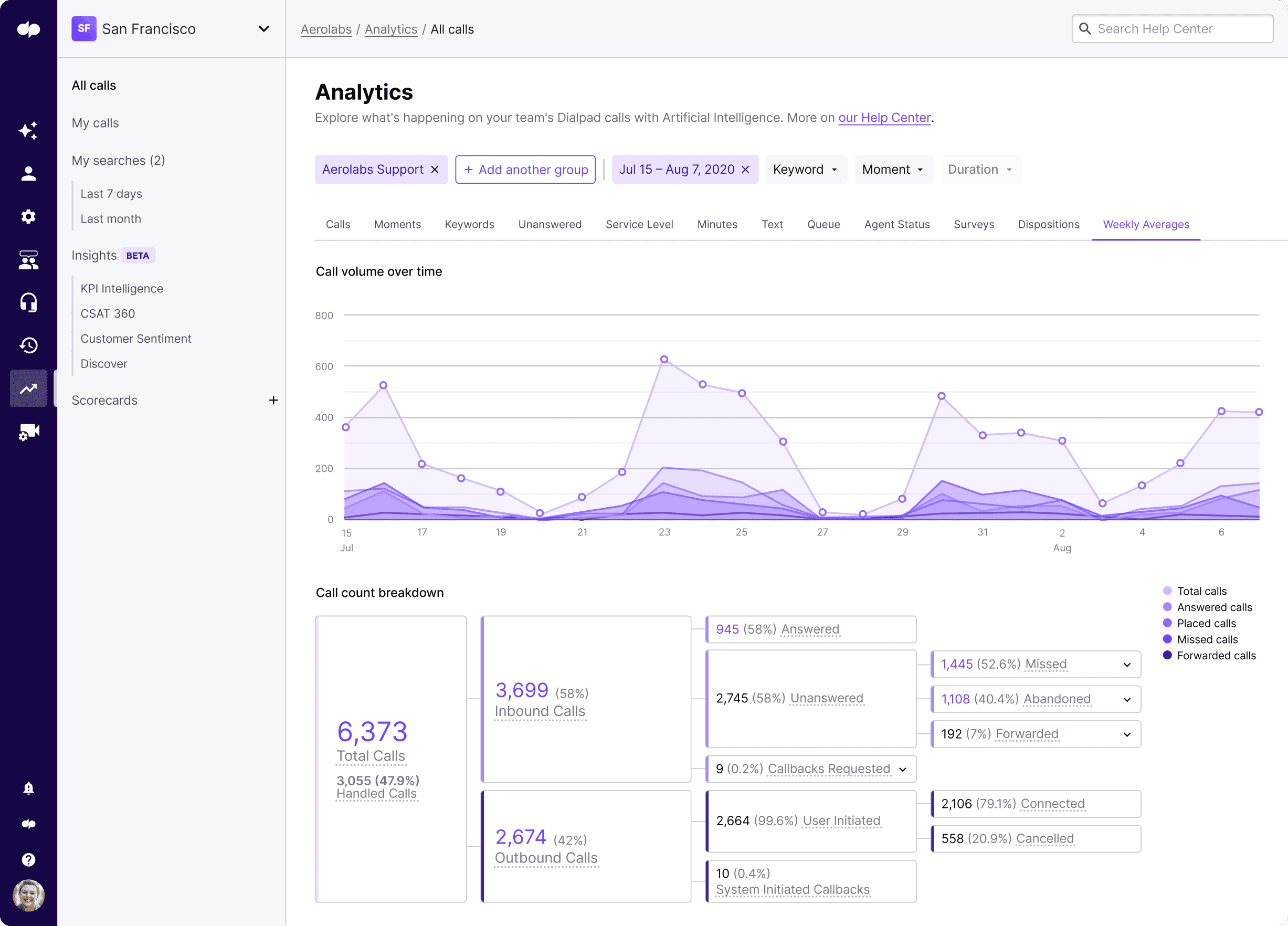
7. Do you need to be able to record calls?
For some businesses, recording calls is important for compliance, tracking billable hours, and monitoring performance. With VoIP phone systems, you don’t need to plug in a physical recording device—you can just click or tap a button to start recording the call you’re on. Dialpad also has an API that automatically pauses recordings when sensitive information, like payment details, are being discussed.
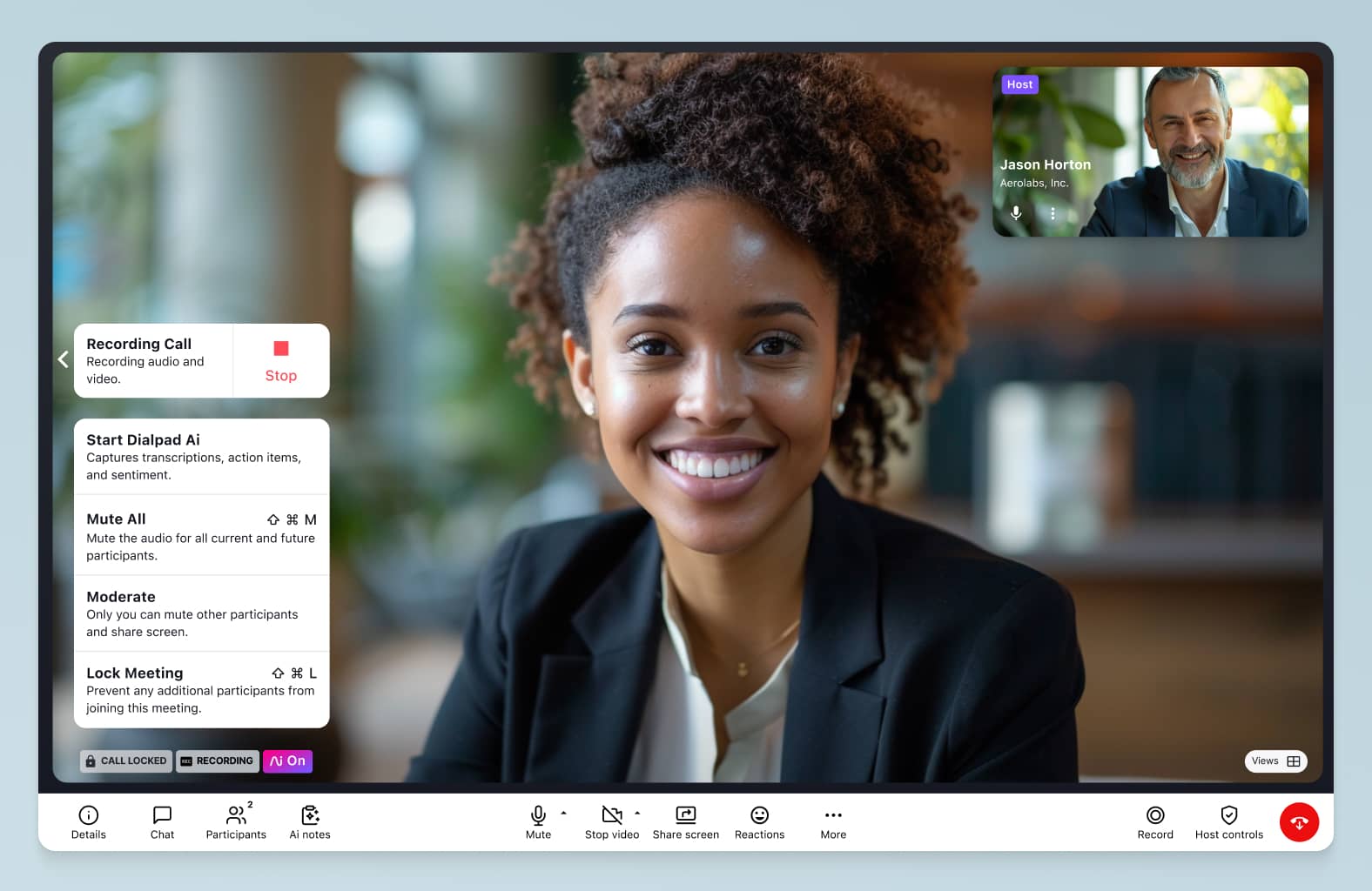
👀 Moving your business to hybrid work?
Grab the Hybrid Work Playbook, which includes real-life case studies and breaks down all things hybrid + remote, from building and sustaining a hybrid workforce to equipping your team for success.
VoIP switching: A 5-step guide
Step 1: Make your plan
Switching from a PBX or traditional phone system to Voice over IP is generally straightforward. Of course, it’s easier if you’re a small business with a few employees compared to a multinational organization with global offices, but in almost all cases, it’s worth it because of the long-term benefits.
The first step of making your plan: Know your requirements. Every VoIP service provider has the same overall features (like how every car brand or model will have four tires), but it’s important to know the nuances, what features each plan comes and doesn’t come with, and so on.
A few features to consider
When you’re looking at features, pay attention to what you’re currently doing with your PBX or landline phone, and what you’d like to be able to do with a more flexible communications platform. For example, do you have to wait for a support team to make changes to your call waiting or forwarding options for you? How long does that take? Most of the features below aren’t especially rare or unique—almost all business phone systems have them.
The difference is in how much easier they are to do with a good UCaaS solution.
IVR
An IVR (interactive voice response) system can automatically direct your incoming calls to the right person or department by letting your callers choose options from a menu. Most people come across this when they’re calling their bank or an airline to make flight reservations.
The IVR then routes the call to the right person or department, to voicemail, or to other self-service options.
One unique thing about Dialpad is that not only does it have an IVR feature, it also has analytics that show you which options are being used (or not used) by your callers, so you can continuously refine and improve that experience:
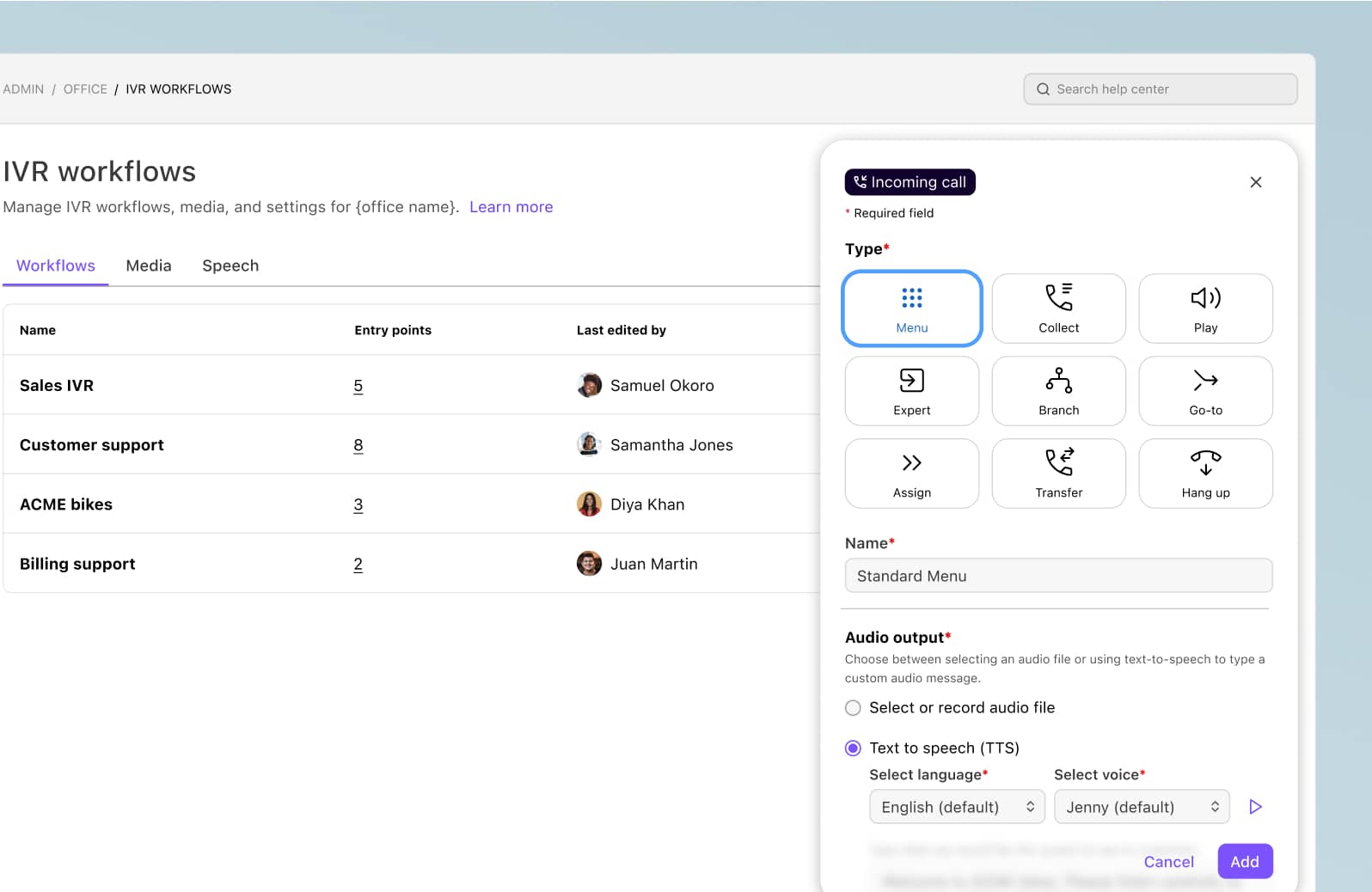
Call forwarding
Almost all VoIP systems will have this feature—look for a call forwarding feature that’s easy to use. Specifically, how easy is it to add, change, or remove a call forwarding number? Can you do it on your own, or do you need to call your provider or submit a ticket?
How long does it take for those changes to be implemented?
In Dialpad, you can set up a maximum of five phone numbers to automatically forward calls to your colleague, another team, or even your cell phone, so that you never miss a call again.
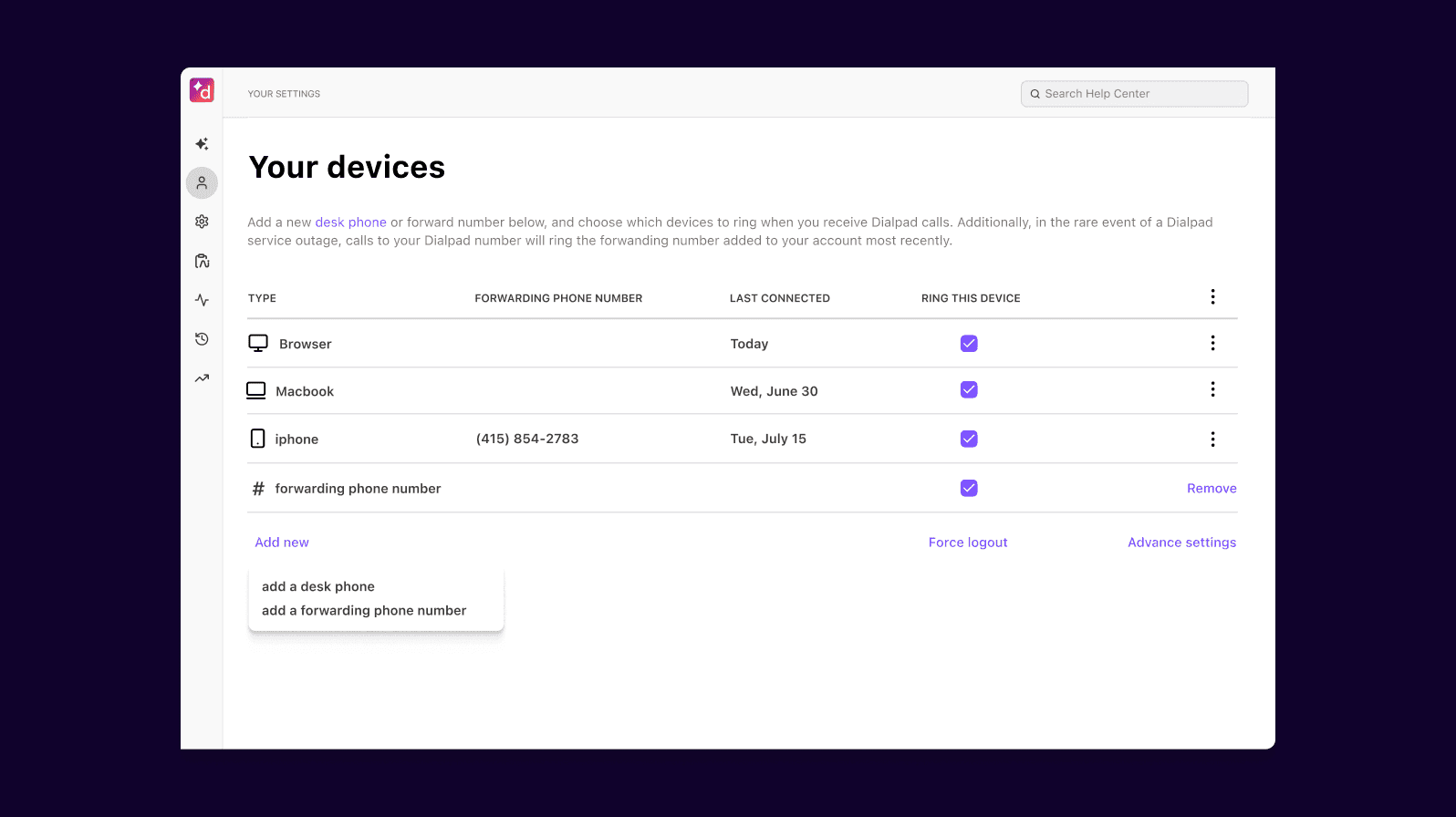
Easy voicemail management
With traditional phone systems, voicemail tends to be one of those things that can be a little annoying and time-consuming to set up. Whether it’s recording a voicemail greeting or trying to access your messages, this isn't always easy to do.
With a solution like Dialpad, you can easily make changes to your voicemail settings from your online dashboard, and there’s even a visual voicemail feature that transcribes your messages—in real time—so that you can quickly scan a message and know what kind of call you missed, without having to listen to the audio:

Number porting
VoIP systems are also very flexible in that you can move your phone numbers around with (generally) very little hassle.
If you’re moving from an old PBX system to a VoIP service or UCaaS platform, they’ll often help you port over your existing numbers.
For example, Dialpad can help you do that, often with minimal downtime. Of course, it does rely on your existing service provider actually releasing those phone numbers and not causing issues, but most of the time, they’re good about it.
Set your budget
Before you get too excited about a shiny new VoIP phone system, you need to set a budget. VoIP services are generally affordable, but there are a few things to consider: Is there a setup fee? What’s the monthly cost, and what does it include? Will you have to pay for add-on features? How much are long-distance calls?
For example, Dialpad’s least expensive plan, which starts at $15 per user per month, gives you:
Unlimited calls in the US, Canada, and your country
Unlimited video meetings
All your fundamental business phone features like call forwarding, a multi-level auto-attendant, voicemail transcriptions, and more
Research your options
There are hundreds of VoIP systems and UCaaS solutions out there. Make a list of all the features you need, then shop around to find the best fit for your business needs.
Most providers offer free trials and 3, so try a few for size and let everyone play with the features. Dialpad has a 14-day free trial that takes just a few minutes to get started with—and you’ll even get a local VoIP number too.
Step 2: Make sure your infrastructure is ready
You’ll need a good Internet service for VoIP to work properly—ideally fiber-optic, but you can also use business-class cable, DSL, or Wi-Fi. It’s a good idea to run an Internet speed test, and contact your broadband provider if your Internet connection is too slow.
As a general rule, each phone connected to the system requires a minimum of 1 Mbps download speed and 0.2 Mbps upload speed. The average internet download speed in the US is 204 Mbps with uploads at 74 Mbps, ensuring a speedy connection.
🖥️ Getting nerdy with it:
VoIP technology tends to work best when connected to a good VoIP router. (If your Internet is wonky, you can always connect to an ethernet cable instead of going with Wi-Fi. Most networked routers can handle VoIP traffic, but businesses can play it safe by choosing one with quality of service (QoS) and bandwidth management functionality. In a large office, you might need several switches and a Virtual LAN (VLAN) configuration to reduce network congestion.
Step 3: Choose the best VoIP provider—for your business
Once you’ve narrowed things down to a few options and done a few sales demos and free trials, it’s time to choose the provider that you think is the best fit for your business and industry.
Beyond features, it’s also important to look at things like call quality and security.
👉 Dialpad tip:
Do you work in a regulated industry like healthcare or finance? Your phone system or communications platform should help you stay compliant and come with robust security features! For example, here’s how companies like Fenway Health and Miller Law Firm use Dialpad.
Step 4: ... And the hardware if you need it
Yes, most businesses can get rid of all their hardware and just use softphones, but there are some cases where that’s harder to do.
If you do have a physical office that still needs a desk phone or two, an ATA (analog telephone adapter) to retrofit your analog phones with, or IP phone handsets, the good news is that many VoIP providers and UCaaS platforms are compatible with them.
Step 5: Get up and running
Most VoIP systems are very easy to get started with, and some take only a few minutes to onboard someone new.
For example, ClassPass has only a two-person IT team, but that team can spin up new offices and new employees around the world—in minutes.
Even for larger companies with more complicated phone service setups, there is often an option to buy a Professional Services package that’s tailored to your business and includes a team that’ll basically set you up and do all the heavy lifting for you.
In most cases, though, you can start making VoIP calls pretty quickly after signing up for a monthly or annual subscription plan.
Ready to switch to VoIP from your landline?
If you’ve been thinking about it for a while, now is a great time to switch to VoIP. With more and more employees expecting remote and hybrid flexibility, this is a crucial step to retaining employees and empowering them to be productive without being in an office.
On top of that, it gives you a lot more options when it comes to hiring in different regions and countries, and scaling up and down during busy periods.
Interested in VoIP switching or want to upgrade your phone system?
See how Dialpad's unified communications platform works with a demo, or take a self-guided interactive tour of the app first!
